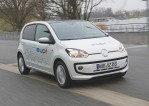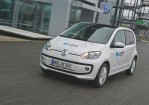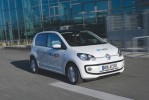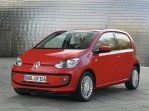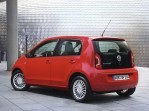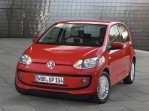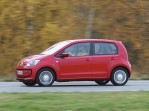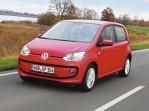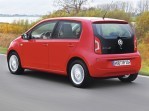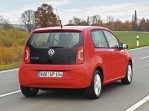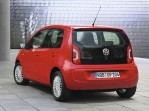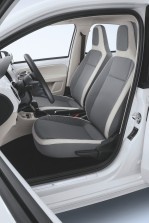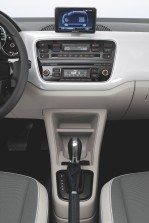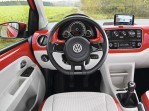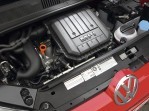Body style: Hatchback
Segment: Small
Production years: 2013, 2014, 2015, 2016, 2017, 2018, 2019
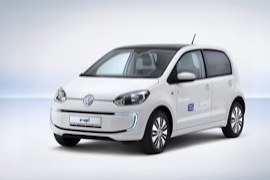 26 Photos
26 PhotosVolkswagen introduced the UP! model in 2010 and announced that an electric version would follow as well, so the electron-powered e-UP! was launched in 2013.
With an increased demand for economical and ecological vehicles, the German automaker found a way to clean its name after the Dieselgate scandal. Thus, VW created a vehicle that could take its customers from A to B in silence and comfort and still be able to be charged at a regular home outlet. Maybe it wasn't the most beautiful or practical car, but it was a big bang for the buck offer.
While it shared its bodywork with its gasoline-powered siblings, the e-UP! Didn't need the same cooling area. Thus, the automaker created a new front bumper with a different lower area. Instead of a grille, it sported a panel flanked by LED lights. Yet, the headlights still sported halogen bulbs. To further differentiate the electric version from the rest of the range, the automaker installed standard 15" light-alloy wheels with a unique design. The charging port was neatly concealed in the right rear quarter panel.
Inside, it looked like a well-equipped up! but still, the dashboard looked different. The speedometer took center stage while the energy consumption gauge was on the left, and the battery level was on the right. Atop the center stack, mounted directly on the dashboard, the supermini electric vehicle featured a navigation system, while the music came from a CD radio mounted underneath the climate control unit.
Power came from a 60 kW (80 hp) electric motor fed by an 18,6 kWh battery pack integrated into the car's floor.
VOLKSWAGEN e-UP 2013, 2014, 2015, 2016, 2017, 2018, 2019
- 18.7 KWh (82 HP)
VOLKSWAGEN e-UP
18.7 KWh (82 HP)
ENGINE SPECS - 18.7 KWh (82 HP) | |
|---|---|
| Power: | 60 KW @ - RPM 82 HP @ - RPM 80 BHP @ - RPM |
| Fuel System: | electric plug-in |
| Fuel: | Electric |
PERFORMANCE SPECS | |
|---|---|
| Top Speed: | 80 mph (129 km/h) |
| Acceleration 0-62 Mph (0-100 kph): | 12.4 s |
TRANSMISSION SPECS | |
|---|---|
| Drive Type: | Front Wheel Drive |
| Gearbox: | Single speed |
BRAKES SPECS | |
|---|---|
| Front: | Ventilated Discs |
| Rear: | Discs |
TIRES SPECS | |
|---|---|
| Tire Size: | 165/65 R15 |
DIMENSIONS | |
|---|---|
| Length: | 141.7 in (3599 mm) |
| Width: | 64.8 in (1646 mm) |
| Height: | 56.3 in (1430 mm) |
| Front/rear Track: | 56.2/56.2 in (1,427/1,427 mm) |
| Wheelbase: | 95.2 in (2418 mm) |
| Cargo Volume: | 8.8 cuFT (249 L) |
WEIGHT SPECS | |
|---|---|
| Unladen Weight: | 2709 lbs (1229 kg) |
| Gross Weight Limit: | 3373 lbs (1530 kg) |
POWER SYSTEM SPECS | |
|---|---|
| Power pack: | Lithium-Ion |
| Nominal Capacity: | 18.7 kWh |
| Range: | 93.2 miles (150.0 km) |
| Notes |
|---|
| The 18.7 kWh lithium-ion battery pack will be enough for a 150 km (93.2 mile) range and can be charged to an 80 percent level in 30 minutes. Average Energy consumption: 11.7 kWh/100 km |
